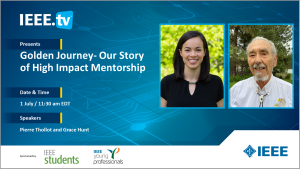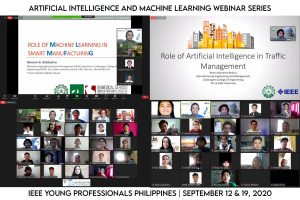Space – that big unknown, so mysterious and out-of-this-world… but so interesting, challenging and with so many applications in our day-to-day life! Everyone knows that the space industry is changing at a dizzying pace and small to large companies are developing state of the art in space technology. Exploring planets in distant galaxies, going back to the Moon, colonizing Mars… there are so many goals regarding space exploration! However, in order to get there, there is much to do, including teaching and inspiring young space engineers to solve the hard challenges and explore the many opportunities that space displays.
Young Professionals in Space (YPinSpace) is an initiative to bring academics, scientists, professionals and students in the space industry from all over the world to one location to discuss recent research breakthroughs, technical advances, existing opportunities and emerging space technologies, with the aim of inspiring the new generations of engineers and of giving them the opportunity to get involved in such a thrilling field.
With a series of successful events in India and Israel, the third edition of this event, Young Professionals in Space 2018 took place at the Universidad Politécnica de Cataluña (UPC), in Barcelona, Spain, from the 17th to the 21st of July. All five days were packed with expert talks, lectures, workshops and even rocket launches! ???? It got together around 100 attendees from 25 countries in Europe, North America, Middle East and Asia with different nationalities, different ages, different educational levels and speciality fields; But all had something in common, a great passion for space.
This intense congress was co-sponsored and supported by different IEEE entities – IEEE Systems, Man, and Cybernetics Society, Geo Remote Sensing Society, Microwave Theory and Techniques Society, Antenna Propagation Society, Aerospace and Electronic Systems Society, Industrial Electronics Society and IEEE Region 8 Young Professionals.
Day 1 Highlights
The event started with a warm welcome from the UPC Chancellor, Prof. Francesc Torres, the Dean of Telecom Barcelona, Prof. Ferran Marqués, and YP in Space co-chairs Prof. Adriano Camps, from the Telecom Barcelona/UPC and IEEE GRSS President, and DrDr. Tushar. Sharma, the founder of YPinSpace 2018,2018 , encouraging students to learn a lot, but also to have fun. And it was a lot of fun indeed!
Participants had the opportunity to dive into the amazing field of space guided by experts from the main space agencies, ESA and NASA and other companies. Dr Javier Ventura-Travesset gave a very complete insight into the European Space Agency current programs and future challenges. Moreover, Dr Sachidananda R. Babu, from NASA Earth Science Technology Office, talked about the importance of early technology development and maturation to reduce risk on space missions. Professionals from the Spanish space company Deimos, Mr Enrique González Laguna and Antonio Latorre gave a thorough introduction to Space Missions and its critical software. These talks were complemented with a description of the small satellite market characteristics, a new business case for space and the dedicated responsive air launch system proposed by Virgin Orbit, by its vice-president Mr Stephen Eisele. The first-morning expert talks ended up with a very interesting lecture on photovoltaic power generation in space by the Airbus expert Dr Claus Zimmermann.
Day 2 Highlights
The second day started with a really motivating talk from Dr Quenton Bonds (NASA Goddard Space Flight Center): “Why me?”, encouraging the students to think about the challenges they had already solved, their individual skills and their future contribution to the space industry.
During this second day, the attendees enjoyed talks from other young professionals like Dr Andrei Muller, that showed the development and way of working with the 3D Smith Chart tool in wireless and space communications. Dr Rafal Sliz, IEEE Young Professionals Chair, explained to the attendees the relevance of IEEE and the benefits for young professionals, with the aim of making the participants question themselves about becoming part of IEEE. Sara Barros, IEEE R8, talked about her work at Thales and the opportunities there and as an IEEE Young Professional in Region 8.
Day 3 Highlights
Talks on the third day were focused on small satellite applications and launchers. Applications of satellite Earth observation data for global social benefits were addressed by GMV expert Dr Carlos Domenech and Professor Steven C. Reising, from Colorado State University, talked about small satellite constellations for remote sensing of the Earth’s atmosphere. Ms Gloria García-Cuadrado, from Celestia Aerospace, shared their concept “Sagittarius Launch System”, that consists of rocket launches from aeroplanes, to be developed in the near future. Mr Francisco García-Lacarte talked about PLD Space trajectory as a young private Spanish company building rockets, focusing on ARION 2, a European and reusable micro launcher for small satellites that aims to launch 150kg to an LEO orbit. Participants were astonished and inspired by the story of the company!
The expert talks finished with a packed morning of dynamic talks in which the professionals talked about their companies, their solutions and objectives, but all with one goal in common, making space easy and accessible. Focused on the CubeSat market, revolutionary start-ups and young companies made the students discover a whole new world of possibilities and job opportunities in this thrilling field. Matteo Emanuelli explained GomSpace proposal “One satellite a day” for serial manufacturing of nanosatellites, as well as giving an overview of the company trajectory and different solutions that they offer. Jordi Barrera talked about Open-Cosmos goal of enabling the next technology revolution with nanosatellites and how they are the first Space Mission provider, with a very intuitive and simple interface and the platform “qbee”. Marc Bernabeu gave an overview of ISIS (Innovative Solutions In Space) solutions, from nanosatellites components to “Brightskies”, a project to monitor air pollution, that is the 4th risk factor nowadays. John E. Ward and Pol Via explained AISTech future nanosatellite constellation for many commercial applications. The participants could satisfy their curiosity after each talk, asking questions that ranged from the different company’s trajectories to trending topics as 3D printing in space and metal 3D printing for CubeSats.
Day 4 Highlights
These professionals and expert talks were complemented throughout the week with technical sessions on a wide variety of space-related topics, imparted by eminent professors from Universidad Politécnica de Cataluña (UPC). Orbital mechanics was the first of the topics, and students learned about the orbital elements, equations and so much more, as well as trying the software ‘orbitron’ for tracking satellites. The attendees also got to learn about the characteristics of the space environment, of the ground station, the thermal control design and the different subsystems of any spacecraft: onboard data handling system, attitude determination and control system, electrical power supply system, telemetry, tracking and control system and the communication system.
But it was not all about listening to presentations; the students also got to use their hands-on skills applying the knowledge obtained in the lectures. After each session, once the students knew the basics about each spacecraft subsystem, we got to work in teams on each one of the – power, attitude determination and control, communications, etc. – using Arduino microprocessor and different components like a solar panel, batteries, a GPS receiver and a temperature and pressure sensors. By the end of the fourth day, we were supposed to have an operative satellite inside a 3D printed can… but most of the teams did not, so it was a pretty geeky late Friday night: electronics, new friends, GPS testing outside, soldering until 2 am in the hotel… (or in a metro station!). It turned out to be a fun night, and we had to get it done because Saturday was… LAUNCH DAY!
Furthermore, some of the participants attended the Mars Game workshop, designed with the purpose to educate engineers about standards and how consensus can be reached in developing a standard, given conflicting individual goals. The two teams reached a consensus on the 4 standard development tasks taking different approaches; an almost clinical one and a more passionate way of arguing. The participants had a lot of fun and learnt techniques of consensus building, very useful in any group decision context nowadays.
Day 5 Highlights
The event ended up with an exciting day launching rockets. The participants took a bus trip to Alcolea de Cinca, Huesca, where we got to launch our CanSats to 700 meters of altitude thanks to Tripoli Spain (Spain Rocketry), an association of rocket enthusiasts, and with the support of Cosmic Research, a student organization from UPC with the aim of becoming the first one to reach space with homemade rockets. It was so exciting; the first time seeing rocket launches for most of the participants!
…
Learning, motivation, inspiration…, and a lot of connections! YPinSpace 2018 allowed collaborations at all levels, between experts, industry, academia… but also amongst the students and young professionals! Coffee breaks and lunch times were perfect moments for all the participants to gather and share ideas and experiences. And of course, the meetup ‘Meet up’ at La Oveja Negra; that was a great opportunity to network accompanied by delicious typical Spanish tortilla, embutidos and sangría!
Dreams that are not so far away… Thanks to YPinSpace we re-discovered the wonders of space, that for most of us means extreme engineering, unique missions, doing it right the first time, challenging conditions… but it is still reachable! It is indeed rocket science, but with the right tools and passionate engineers and scientist it is not science-fiction: it is already a reality! …and the best part is that we have the chance to be there, on the edge of this game-changing technology revolution!
See you next year in Dubai!
Article by Laura Gonzalez Llamazares, master’s student at the Universidad Carlos III de Madrid (UC3M)
Tags:Aerospace EngineersIEEE Young Professionals in SpaceSpace industry






